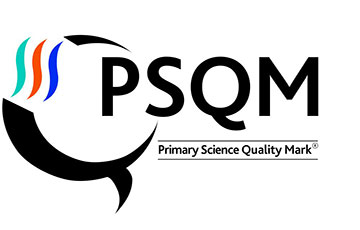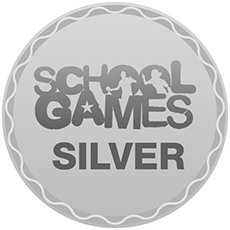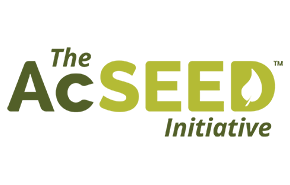Art and Design
Introduction
At Adswood Primary School we are committed to providing all children with learning opportunities to engage in quality art and design.
The purpose of Art and Design education is to give pupils the skills, concepts and knowledge necessary for them to express their responses to ideas and experiences in a visual or tactile form. It fires their imagination and is a fundamental means of personal expression.
While it is essentially a practical subject, art should provide opportunities for reflection and, with increasing sensitivity, pupils should acquire the ability to make informed, critical responses to their own work and that of others.
Aims
The aims of Art and Design are:
• To enable all children to have access to a varied range of high quality art experiences
• To provide an imaginative, innovative and co-ordinated art programme which will foster enthusiasm for art and design amongst all the children
• To foster an enjoyment and appreciation of the visual arts and a knowledge of artists, craftspeople and designers, through links with the local and wider multicultural community as well as other cultures and time periods
• To stimulate children’s creativity and imagination by providing visual, tactile and sensory experience
• To help children explore the world at first hand, using all their senses and experimentation, and so gain knowledge and understanding of the world in which they live
• To develop children’s understanding of colour, form, texture, pattern and their ability to use materials and processes to communicate ideas, feelings and meanings
• To inspire confidence, value and pleasure in art
• To cultivate children’s aesthetic awareness and enable them to make informed judgements about art and become actively involved in shaping environments
• To teach children to express their own ideas, feelings, thoughts and experiences
• To develop children’s design capability
• To enhance children’s ability to value the contribution made by artists, craft workers and designers and respond critically and imaginatively to ideas, images and objects.
Art and design curriculum planning
In addition to Art and Design supporting the cross-curricular teaching of other foundation subjects, it is also taught discreetly during dedicated art days each half term. Our curriculum is carefully planned to engage and excite all our learners driven either by a particular artist or the acquisition of specific skills and techniques. Our long-term and medium-term plans map out the themes covered each term for each key stage. These plans define what we will teach and ensure an appropriate balance and distribution of work across each term. Our curriculum ensures that children accross all key stages are being introduced to artists from different cultures, time periods and varrying art styles. All staff follow a clear planning structure which promotes; 'making choices', 'planning and reflecting' and children 'creating and evaluating' their own outcomes.
Our half termly 'Art Days' introduce all children from Early Years right through to Year 6 to world famous artists and popular artwork. Our Art Week 2024 celbrated three world-renowned pieces of art, The Scream, Starry, Starry Night and The Mona Lisa. Each year group took inspiration from these 'hooks' to create unique, original artwork by either adopting the artist's style/technique/colour choice or taking the subject matter and collaborating it with their own skills. Our Adswood Art Gallery wonderfully showcases the outcomes for our learners, placing them at the very centre of our creative curriculum whilst enabling the 'impact' to be celebrated and shared throughout our school.
Progression and Continuity
The school uses a variety of teaching and learning styles in art and design lessons. Our principal aim is to develop the children’s knowledge, skills and understanding in art and design. We ensure that the act of investigating and making includes exploring and developing ideas, evaluating and developing work. We do this through a mixture of direct teaching and individual/ group activities. Teachers draw attention to good examples of individual performance as models for the other children. They encourage children to evaluate their own ideas and methods, and the work of others, to say what they think and feel about them. We give children the opportunity within lessons to work on their own and collaborate with others, on projects in two and three dimensions and on different scales. Children also have the opportunity to use a wide range of materials and resources including other artists’ work, educational visits and computing.
We recognise the fact that we have children of differing ability in all our classes, and so we provide suitable learning opportunities for all children by matching the challenge of the task to the ability of the child. We achieve this through a range of strategies which are differentiated by task, expected outcome and/or support from peers or adults.
Progress and Achievement
Children are monitored on a regular basis to check progress. We encourage all pupils to take responsibility for their own learning. Throughout Key Stage 1 and Key Stage 2, all children use and develop their own sketchbooks in which they experiment with new techniques, skills and knowledge in addition to engaging in artist studies. Children are encouraged to annotate their own sketchbooks with personal reflections whilst evaluating the effectiveness of their own and artist's outcomes. Post-it notes are used by staff to offer guidance and written feedback without physically marking children's work. A range of Assessment for Learning strategies are used, for example peer feedback – the children are regularly encouraged to comment on each other’s work using vocabulary related to the skill taught, evaluation, self assessments, success criteria, the use of talk partners and end of unit teacher/pupil evaluation. Through these, both children and adults are able to recognise the progress being made. Our whole school tracking system is updated with teacher assessments each term to monitor childrens progress towards national expectations. Outcomes are showcased on 'WOW Walls' around school, presented in assemblies and shared through 'pop-up' galleries outside of the classroom which ensures children are seeing the impact of their outcomes.
Monitoring
From year 1, children are encouraged to use sketchbooks which serve as a cumulative record of their work. Samples of children’s work are also collected. Monitoring takes place regularly through sampling children’s work, teacher planning and lesson observations. From September 2022, knowledge organisers for each year group have been shared with all children so that they can monitor their own progress by evaluating their outcomes which are linked directly to learning challenges from the National Curriculum.
Spiritual, moral, social and cultural development
The teaching of art and design offers opportunities to support the social development of our children through the way we expect them to work with each other in lessons. Groupings allow children to work together and give them the chance to discuss their ideas and feelings about their own work and the work of others. They also develop an understanding of different times and cultures through their work on artists, designers and craftspeople.
Resources
There are a wide range of resources to support the teaching of art and design across the school. All classes have a range of basic resources kept in the classroom; large bottles of paint and some other general equipment Visits to art galleries, theatres and museums are planned to enhance learning and give hands on opportunities. We greatly value VVE experiences across school, human resources playing a huge part of this. We have invited local artists into our school in KS2 so that our children have opportunities to work with and learn from real life artists.






